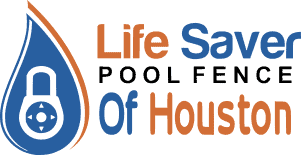
Ensuring pool safety is paramount for any homeowner, especially as the weather warms up and families spend more time outdoors. A comprehensive pool safety checklist is essential to prevent accidents and promote a secure environment for everyone enjoying the pool. In 2024, advancements in technology and safety standards continue to refine our approach to pool safety. Here’s a detailed checklist covering various aspects of pool safety to keep your backyard oasis secure.
Life Saver Of Houston’s Pool Safety Checklist 2024
1. Fencing and Barriers: Install a four-sided isolation fence at least four feet high around the pool area. This prevents unauthorized access, particularly by young children and pets. Ensure that the fence has self-closing and self-latching gates, and the latches are out of reach of children. Make it a habit to always lock these gates!
2. Pool Covers. Invest in a sturdy and reliable pool cover that can support the weight of an adult. Automatic pool covers are ideal as a secondary source of safety. They can be easily deployed and provide an additional layer of safety when the pool is not in use.
3. Alarms: Install pool alarms that detect motion or unauthorized entry into the pool area. These alarms can be mounted on gates, doors leading to the pool area, or directly on the pool surface. They provide an early warning system in case someone enters the pool area without permission.
4. Safety Equipment: Keep essential safety equipment near the pool area, including life rings, reaching poles, and a first aid kit. Ensure that all family members know how to use these items in case of an emergency.
5. Swimming Ability: Encourage everyone who uses the pool to learn how to swim, regardless of age. Enroll non-swimmers, especially children, in swimming lessons taught by certified instructors. A great source to do this at in the northern Houston area is at a swim school called Life Saver’s Survival Swim School… my wife has owned and taught at that school for over 20 years, now. Additionally, ensure that weak swimmers or inexperienced individuals wear properly fitted life jackets while in or around the pool.
6. Supervision: Designate a responsible adult as a designated pool watcher whenever the pool is in use. This person should actively supervise swimmers, avoid distractions such as phone calls or socializing, and be prepared to respond to emergencies immediately.
7. Water Safety Rules: Establish and enforce water safety rules for everyone using the pool. Rules may include no diving in shallow areas, no running on the pool deck, no pushing or rough play, and always entering the pool feet first. I’ve also written a FREE eBook that might help you in this area… Get it HERE.
8. Emergency Preparedness: Develop an emergency action plan and ensure that all family members are familiar with it. This plan should include steps to take in the event of a drowning or other pool-related emergency, including how to perform CPR and contact emergency services.
9. Regular Maintenance: Keep the pool clean and well-maintained to prevent accidents caused by slippery surfaces or malfunctioning equipment. Regularly inspect and clean the pool, skimmers, filters, and drains. Ensure that all pool equipment, such as pumps and heaters, is in good working condition.
10. Chemical Safety: Store pool chemicals safely in a locked storage area out of reach of children and pets. Follow manufacturer instructions carefully when handling and adding chemicals to the pool to avoid accidents or chemical burns.
11. Educational Resources: Stay informed about the latest pool safety guidelines and resources provided by organizations such as the American Red Cross, the Centers for Disease Control and Prevention (CDC), and the National Drowning Prevention Alliance. These resources offer valuable information on drowning prevention, water safety education, and pool maintenance best practices.
12. Regular Inspections: Conduct regular inspections of your pool and its surrounding area to identify and address any potential safety hazards. This includes checking for loose or broken fencing, damaged pool covers, and slippery surfaces.
By following this comprehensive pool safety checklist, you can create a secure environment for your family and guests to enjoy the pool while minimizing the risk of accidents or injuries. Remember that pool safety is an ongoing responsibility, so remain vigilant and proactive in maintaining a safe backyard oasis.
Calling Life Saver Of Houston Should Be Your First Step
Your first step to ensure your family’s pool safety in 2024 might just be to call our local office in north Houston! We have recently moved our home office to the Miracle City area of Conroe, Texas! Call our owner Wayne by dialing (832) 367-2377. He will be happy to help you with any safety problems you might be having with your home pool or it’s fence. Or, you can always email him!



